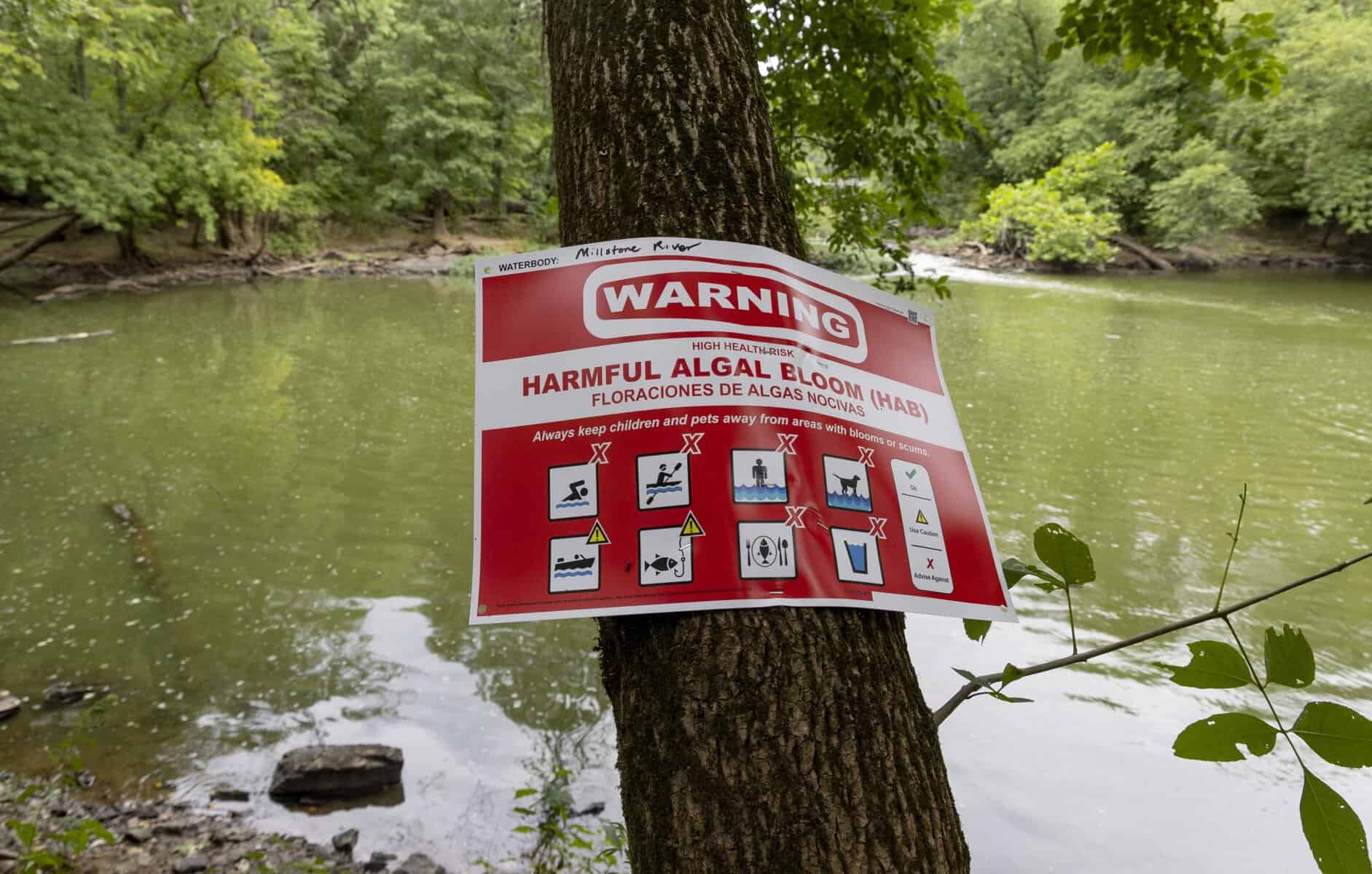State’s harmful algal bloom dashboard allows public to view information on HABs
New Jersey is on track for another intensive harmful algal bloom (HAB) season in 2023.
The New Jersey Department of Environmental Protection (NJDEP) warned on Aug. 3, that the state agency is seeing an increase of HABs in state waterbodies.
“With a warming climate as you can imagine, we are seeing an increase in both the number and the persistence of HABs observed in New Jersey and globally,” said Kati Angarone, NJDEP Assistant Commissioner for Watershed and Land Management.
“Because we are already experiencing record temperatures and more intense rain events as that climate continues to change, we do expect the situation to worsen and that is the bad news.”
In 2022, New Jersey had 65 waterbodies with confirmed HABs, which was an increase from the state’s previous high in 2020 of 47. Last year’s HAB season was the state’s highest confirmed HABs to date.
“It was a significant increase last year, that trend is continuing this year,” said Victor Poretti, Section Chief, Bureau of Freshwater and Biological Monitoring. As of Aug. 1, we have had 25 waterbodies with confirmed HABs. This same time last year, we had 30. We are on track to have that same intensive HAB season.”
According to NJDEP, in 2022 the agency had also seen an increase in toxins being produced at the sites that were sampled for HABs.
“Up until last year, we usually saw about 50 percent or less of the sites sampled having had toxins over our thresholds. In 2022, that increased to over 60 percent and this year we are trending towards the same,” Poretti said.
“Right now, it is trending over 50 percent of the sites that we sampled having toxins being produced. That is a concern, not only are we seeing more HABs, we are also seeing more toxic HABs.”
The NJDEP has a HAB interactive map, known as the HAB dashboard, for the public to view. It consists of information gathered of HABs being investigated in waterbodies across the state and color coded HAB alert levels for those waterbodies.
The HAB alert levels include HAB not being present, watch, advisory, warning and danger.
For Mercer County, the most recent waterbody reported with an advisory level as of Aug. 8 was Rosedale Lake in Pennington. An advisory alert level is a confirmed HAB with moderate risk of health effects and an increase potential toxin above public health threshold.
In Middlesex County, the dashboard does not show any HABs reported or detected in waterbodies as of Aug. 8.
In Somerset County, a pond near the county’s fairgrounds in Bridgewater showed no HABs reported or detected.
In Burlington County, there are a number HABs found in waterbodies across the county ranging from no HABs present to an advisory of confirmed HABs with moderate risk.
HABs are an excess of cyanobacteria and takes the right conditions of sunlight, warm temperatures and increased nutrients to form a HAB, Angarone said.
“Those increased nutrients can come from things like failing septics, wildlife, lawns, stormwater runoff and even the internal circulation of a water body,” she said. “HABs as we know can make people, pets, and wildlife sick either from the cyanobacteria cells themselves or from the toxins some HABs produce.”
Angarone noted that the good news is the state and many communities across the state have mobilized to address those factors in HAB formations that can be controlled.
“We can’t control them all, but we can control nutrients,” she added.
The NJDEP has been monitoring HABs since 2017 and has a multi-pronged approach to addressing them that involves multiple programs and agencies.
Angarone said, “We are doing so with a screening and reporting strategy that includes things like continuous monitoring at buoys; overflights that are done seasonally; handheld monitors that we give to our local partners; targeted autonomous surface vehicle monitoring and laboratory analysis for confirming and understanding HABs and the toxin levels they may produce.”
NJDEP continues to provide funding to communities in the prevention and mitigation of HABs.
Over this last year, the state agency has provided funding to communities for the characterization of water bodies, watershed planning, removal of sediments and invasives and monitoring and treatment installation.
In addition, stormwater assistance grants have been provided to improve water quality for projects that included stormwater planning and analysis, green infrastructure, retrofits to existing stormwater infrastructure and removal of impervious surface.
“In January, we adopted a new municipal stormwater permit that includes really fundamental requirements like stormwater infrastructure mapping, so municipalities can better understand how their stormwater systems are functioning or how they are not,” Angarone said.
She highlighted the adoption of the inland flood protection rule that replaces outdated precipitation estimates with current data that accounts for observed and projected increases of rainfall.
“Finally, we are working very hard with our partners at Rutgers and stakeholders to develop a user-friendly Watershed Assessment tool that will help local officials and advocates better understand the opportunities and stressors affecting water quality in their watershed,” Angarone added.
The tool will help communities understand and plan for the future and assist permittees to comply with those new requirements.

